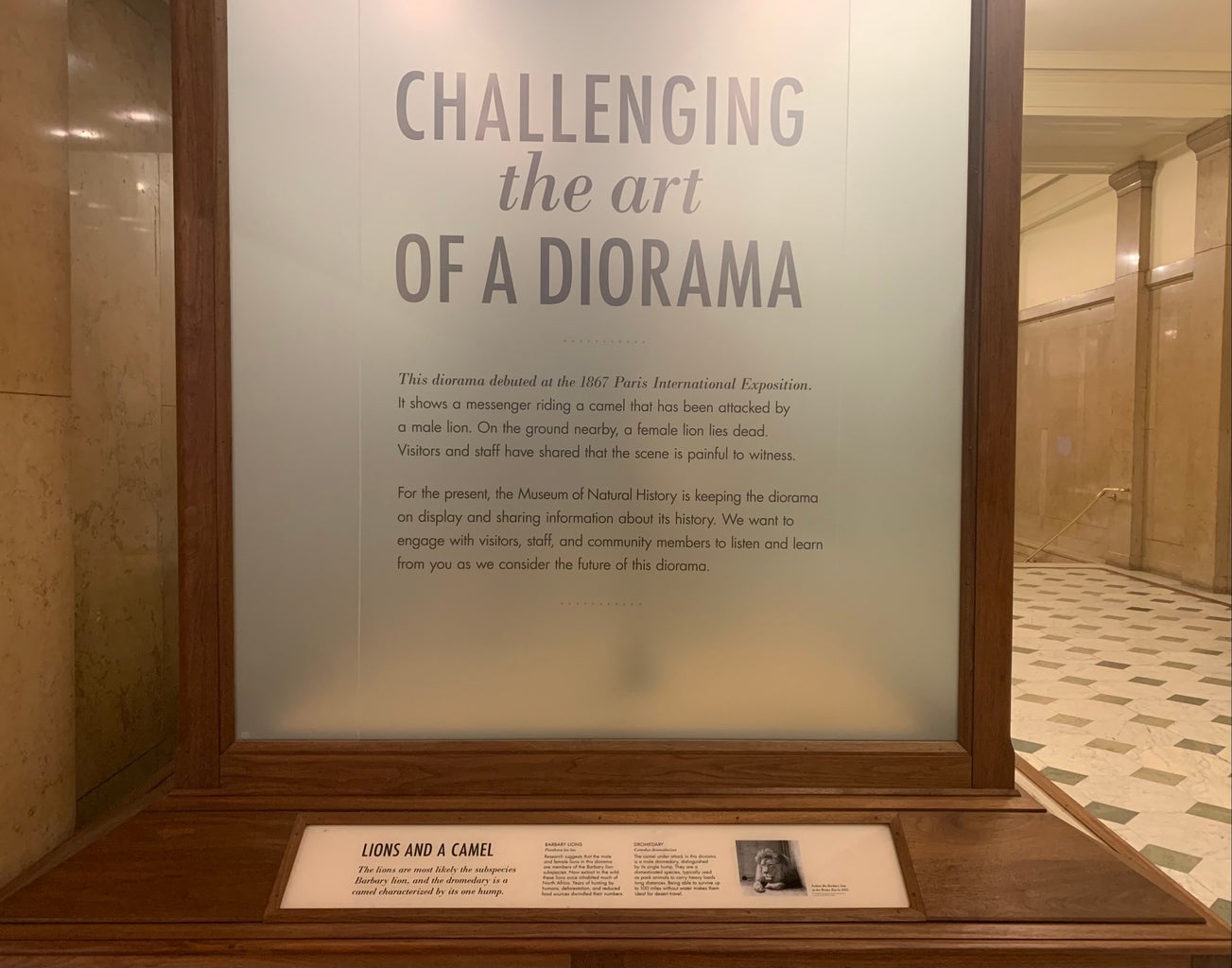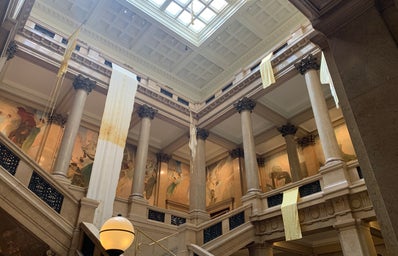“It’s complicated.”
This is the answer you might get if you ask how to fly a plane, what the history of the universe is, or how to make a souffle. This is also the beginning of the Carnegie Museum of Natural History’s answer to a different question: ”What’s wrong with this diorama?”
The diorama is titled Lion Attacking Dromedary. A man, riding a camel, has killed one lion and is positioned, knife in hand, fending off a second. Created by Édouard Verreaux, a French naturalist and taxidermist, it was intended to represent a courier on his way through the North African desert. In 2020, the museum hid this “complicated” scene behind a curtain after visitors found the violence to be disturbing. However, it wasn’t hidden for long.
Originally created for the 1867 Paris International Exposition as a representation of North Africa, the museum soon unveiled the display as a representation of Orientalism.

A new encasement emphasized the multi-fold troubles of the scene for visitors. Five main issues are labeled across the glass of the case. The diorama “minimizes violence” as a scene that many have confided as painful to witness. The symbol of a lion, associated with imperial power, pouncing on a representative of North African culture “reinforces colonialist views.” The taxidermists who created the diorama pieced it together with elements from multiple cultures into a scene that “contains inaccuracies” as it was meant for a Western audience enticed less by other cultures than the foreign exotic. The diorama “contains human remains” as the head of the man is shaped around the skull of an unknown individual. Finally, a label placed above the body of the fallen lioness underlines how this is an image that “pits humans against nature.”

The diorama is labeled as part of the Museum of Natural History. Nonetheless, it is situated between the Grand Staircase and the Hall of Sculpture, two rooms that were displaying artwork for the Museum of Art’s 58th Carnegie International exhibition. Positioned between art, it emphasizes how the diorama was created not with the authenticity of fact, but with the imagination of art.

These labels delve into the “complicated” nature of this piece, with goals to both remove the human remains and remove the idea that there is one culture whose sole identifying factor is an exoticized “North Africa.” The museum asks visitors to read along with their thought process and contribute their own thoughts and questions via a QR code survey. This year’s theme for the Carnegie International, the exhibition held every three to four years that the diorama found itself surrounded by, was “Is it morning for you yet?”

The museum explained how the expression comes from the Mayan Kaqchikel language, acknowledging the “anxieties, troubles, and heartaches” that make it night for some even after the sun has risen. It may not have officially been part of the show, but Lion Attacking Dromedary’s new encasement works to recognize the “anxieties, troubles, and heartaches” that lie within it.
It too deserves to be asked the question—Is it morning for you yet?
It’s complicated. But that’s nothing to shy away from.

